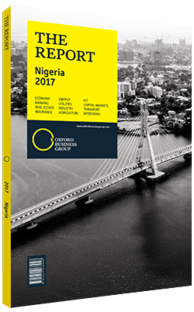Bukar Tijani, Regional Representative for Africa, UN Food and Agriculture Organisation: Interview

Interview: Bukar Tijani
What are some of the biggest challenges facing smallholder farmers in Nigeria?
BUKAR TIJANI: Smallholders make up the majority of farmers in Nigeria. This type of farmer cultivates 2-3 ha of fragmented family farm holdings and operates at a subsistence level. They face many challenges, including low productivity, limited access to finance, lack of improved farm inputs and technologies for mechanisation, and limited advisory services. However, the greatest challenge is low productivity. Smallholder farmers need to be empowered through capacity development to adopt better techniques, technologies and finance, as well as procure improved inputs, land hire and labour-saving tools that would increase their productivity.
What are the most beneficial agriculture technologies that have been employed in Africa?
TIJANI: There are a few tech-related initiatives that work around Africa, which Nigeria – being one of the leading countries under the e-wallet system – used for the efficient and effective distribution of inputs to farmers, herders and fishers in a timely manner under its Growth Enhancement Scheme. In southern Africa, a similar use of electronic vouchers for input distribution from dealers to farmers and the linkage of farmers to markets has been very successful. Another useful tech tool is Esoko, a platform that links farmers to markets and provides market prices, weather forecasts, bids and offers, production protocols and financial services. Esoko is currently deployed in 10 African countries and has plans to expand to others. Conservation agriculture is another important initiative common in southern Africa. A widely employed practice in West Africa, is the use of small-scale food processing equipment that adds value to agricultural products and reduces the drudgery of farm work, especially for female farmers. The use of solar power for dryers, pumps for small-scale irrigation and processing systems has also shown good promise, especially for smallholder farmers in more rural areas.
What can be done to help encourage capital inflows into the country’s agricultural value chains?
TIJANI: Addressing impediments, such as the lack of clear policy pertaining to agricultural investment, could encourage capital inflows. Some of these infrastructural deficiencies are investment opportunities, especially through public-private partnerships.
In addition, reducing financial risk exposure would encourage commercial banks to provide more funding for activities in value chains. Ensuring the Nigerian Incentive-based Risk-sharing System for Agricultural Lending is sustained will definitely boost more financial linkages for farmers and agro-dealers to increase productivity. Other investment opportunities in the Nigerian agricultural sector include mechanisation and irrigation infrastructure, the expansion of storage facilities and conditioning centres around markets and airports, and food processing. The business of value addition to staples and commodities has wide-reaching potential, in addition to the development of the horticulture crops value chain.
What specific measures can Nigeria adopt to improve its self-sufficiency in key staple crops?
TIJANI: There are a wide number of measures that should be taken. There is the need to maximise present opportunities in small-scale irrigation while expanding the irrigation infrastructure around existing dams. Investment in research and development needs to increase in order to roll out existing low-cost technologies that have proven effective. At the same time, we have to increase the use of improved varieties of seeds to increase crop yields. Similar initiatives should be taken to improve livestock farming through cross breeding with exotic and domestic best breeds for increased meat, dairy and egg production. For the fishing industry, it would be beneficial to create multiple centres for fish feed production, and further encourage the local processing of fish on a commercial basis.
You have reached the limit of premium articles you can view for free.
Choose from the options below to purchase print or digital editions of our Reports. You can also purchase a website subscription giving you unlimited access to all of our Reports online for 12 months.
If you have already purchased this Report or have a website subscription, please login to continue.

